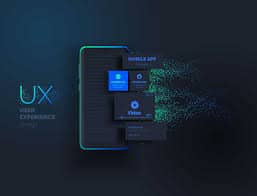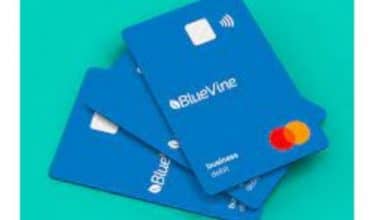You have a user experience whenever you utilize a product or service. This may involve utilizing a mobile app, a website, a physical object (like trying on a new pair of running shoes), or a service (like booking a hotel or riding public transportation, for example).
All facets of this contact are referred to as user experience or UX. Consider the last time you tried a brand-new product. Did you succeed in completing your task? How simple was it? How did it affect how you felt? Easy, efficient, and enjoyable products and services are the goals of UX design. So this article will help you understand better what a user experience designer is.
What is User Experience Designer?
Making a product or service functional, pleasurable, and accessible is the responsibility of the user experience designer. Although many businesses create user experiences, the phrase is most frequently connected to digital design for websites and mobile applications. The general phases of design typically remain the same, even though the precise method changes from product to product and firm to company.
How to Become a User Experience Designer
There is no single path to a prosperous career as a user experience designer because the area is vast and constantly changing. Graphic design, architecture, interior design, software development, and industrial design are just a few of the professional sectors whose skill sets intersect with those of user experience designers.
Here are a few ways to become a user experience designer:
#1. Enroll in a User Experience Designer Course
Even if you lack any particular prior expertise, you can begin preparing for your future with a user experience designer course or certification. Find a class or program where you may gain knowledge of the principles, practice with the most up-to-date user experience designer tools, finish projects for your portfolio, and connect with people in the field.
#2. Put Your Abilities to Use in the Real World
You can begin gaining experience as soon as you are recruited as a user experience designer. Give your time and talents to a non-profit, charitable organization, or the company of a friend or relative. An alternative would be to remodel a previous user experience that wasn’t as excellent as it could have been. The term “unsolicited redesign” is frequently used to describe this.
If you already have a full-time job in another industry, you can hone your user experience designer abilities thereby spotting possible problems and coming up with solutions.
#3. Create a Portfolio of Designs
Although you don’t need a degree to work as a user experience designer, you should have a portfolio to show potential employers your abilities. Compile the assignments you’ve completed for class, volunteer work, and unasked-for redesigns. As you get more experience, keep adding your best work.
Roles and Tasks for User Experience Designer
You are in charge of ensuring that users are satisfied with a product in general as a user experience designer. Consider yourself the customer’s advocate, constantly seeking methods to enhance the client’s experience. Let’s look at some of the duties and responsibilities you could experience while working on a design.
#1. Recognize the Brand and the User
Consider the issue you’re attempting to address for the user (and how this relates to your brand’s objectives).
#2. Carry Out Consumer Research
Identify the needs, objectives, behaviors, and problems of the user. One-on-one interviews, focus groups, surveys, and A/B testing are a few examples of user research tools. A UX researcher may oversee this process at some businesses.
#3. Examine What You’ve Discovered
Building user personas based on your research will help you at this stage identify the key components of the good or service. Make a start at mapping out the user flow.
#4. Artwork
You’ll develop site maps, wireframes, or prototypes as you start to flesh out the design to offer you and your team a clearer concept of what the finished result will look like. A user interface (UI) designer will now add any necessary visual or UI components.
#5. Carry Out User Research
Utilize usability testing to verify the design by seeing how actual users interact with the good or service. Determine any issues with the design and create fixes.
#6. Deliver Your Project
Give your client or business the design solution, and requisite abilities for a user experience designer to use a variety of technical and professional talents to launch successful products and services (or enhance already-available ones).
Even if you’re new to UX design, you’ve probably already established a few of these talents since many of them are transferable from other professions. By concentrating on these crucial abilities, you may start to lay a solid career foundation.
Workplace Abilities
- Communication abilities will aid you in conducting effective user interviews and presenting your solutions to customers or management.
- Empathy enables you to consider issues and solutions from the perspective of the user.
- Collaboration abilities enable you to cooperate with your team while accepting criticism, looking for solutions, and drawing on knowledge. You are urged by critical thinking to question your presumptions and come up with original solutions.
Technical Expertise
- Survey: You can use research, such as interviews, surveys, and observation, to help you make the best choices possible during the design process.
- Information: You can organize and prioritize huge and complex sets of information with the aid of information architecture.
- Wireframing: You can quickly examine design options by wireframing (creating a basic framework for a website or app).
- Prototyping: is crucial for evaluating functionality and discovering issues.
Basic visual design and coding abilities might help you comprehend how your design fits in with the larger product development process, even though they are not necessary for UX designers.
Jobs for User Experience Designer
You may come across a variety of job titles related to UX (such as UX designer, interface designer, product designer, and service designer), as UX design is an interesting and constantly developing industry.
In a smaller organization, your function as a UX designer will probably be more general and include accountability for every stage of the design process. At a bigger organization, you might concentrate on a particular area of UX design, such as interaction design, information architecture, usability analysis, research, writing, or writing.
You will have the chance to grow within your area of expertise as a UX subject matter expert (SMX) or take on a managerial position as a project manager, product manager, or director of the user experience as you gain experience.
User Experience Designer Salary
The average user experience designer pay in the US is $96,436. Like most professions, the pay for a user experience designer can vary based on your level of expertise, the business you work for, and the location of your job. As with any job, your wage expectations should change as your experience and talents advance.
Like most professions, the pay for a user experience designer can vary based on your level of expertise, the business you work for, and the location of your job. We’ve put together this salary guide for user experience designers in 2023 to help you have a better idea of what to anticipate or to inspire you to imagine the possibilities that a career in UX might open up for you.
We’ll talk about the following:
#1. Summary of user experience designer salaries
Starting a new job may be a thrilling but uncertain adventure. You can be unsure of your ability to earn the desired wage or of your job’s long-term security.
Fortunately, since the UX industry’s inception, there has been a steady rise in the demand for UX designers. Design-led businesses outperform their peers in terms of revenue and overall success. The average UX designer’s compensation rises to reflect this truth as it becomes more widely acknowledged.
There are additional positions and different wage expectations for each of them as more specializations in the area develop. Here is our checklist of additional roles you might be interested in when you get more specialized expertise. The averages are as published by Payscale unless otherwise stated.
#3. Salary for UX/UI Designers
Companies frequently demand at least a basic understanding of user interface (UI) from UX designers before hiring them. We want to stress that the focus and skill set needed for each function actually warrants that UX and UI are two separate roles. But if you gain equivalent proficiency in both areas, you might stand out in the field and perhaps earn a larger income.
UX/UI designers typically earn $91,950 per year in the United States.
#4. Salary of UX Writers
If you have a knack for writing in the first place which many UX designers do why not get rewarded for that particular knowledge?UX writers work in a similar manner to UX designers, but their primary goal is to make the written information that users encounter throughout the user journey as frictionless as possible. According to the yearly compensation data published by UX Writing Hub, the median U.S. salary for UX writers is $110,000.
#5. Salary for UX Researchers
Consider becoming a UX researcher if you have a strong love for user research and picture yourself devoting the majority of your work time to the initial stages of the UX design process.
UX researchers typically earn $108,500 a year in the US.
#6. Salary for UX Strategists
Finally, you can think about a job as a UX strategist if you possess sound business judgment and the capacity to establish rapport with stakeholders of all types. With a salary to prove it, this position will put you at the meeting point of business and design. UX researchers typically make $92,000 a year in the US.
User Experience Designer Certification
Employers will increasingly discriminate between self-taught or uncertified designers and those who have finished a formal UX certificate as the demand for UX designers rises. A free UX design micro-course can give you a basic introduction to the area if you don’t already know much about it and can help you decide whether you’d be a good match for a career in UX.
But after that, you should look into certification programs! All the knowledge and abilities you’ll need to be successful in the field will be taught to you by a respected UX design certification program.
Online Certification Courses for User Experience Designers
#1. The UX Design Program at CareerFoundry
Ideal for: (Studying online with the help of a private tutor and a one-on-one mentor)
How Does it Function?
After enrolling, you’ll receive access to the online learning environment and be paired with a mentor and a personal tutor. Through the online platform, you will have access to all of the course material. After reading it, you will complete practical activities. Your tutor receives these and marks them.
How Much Time Does it Take to Finish?
The course lasts for a total of 10 months and can be taken at your own speed. If you put in roughly 15 hours each week, you should be able to complete the coursework in 10 months. You can also put in more hours each week to finish it sooner.
What is the Price?
The total cost of the CareerFoundry UX Design Program starts at $7,900, but tuition varies by location and is reasonably affordable. Paying in full advance or receiving a minor course discount are just two of the many payment choices available.
#2. Career Track for Springboard UX
Ideal for: (Studying online with one-on-one guidance from a mentor)
How Does it Function?
The Springboard UX Career Track is designed for people looking to change careers and for those who can show that they have some relevant expertise or experience. A degree in a related discipline, such as graphic or visual design, psychology, research, marketing, or web development, as well as at least one year of verified work experience (or aptitude for problem-solving, communication, and collaboration), are prerequisites for the course.
How Much Time Does it Take to Finish?
The entire course is completed online, at your own pace, with the assistance of a personal mentor with whom you can speak on a weekly basis. The average student devotes 15-20 hours each week to the course over the course of six months.
What is the Price?
Depending on your payment method, the Springboard UX Career Track costs between $7,900 and $14,500 USD. You’ll save 17% if you pay in advance.
What are the Certifications for User Experience Design?
Credentials that demonstrate a candidate’s proficiency in managing the user experience are UX design certifications. People who want to obtain these accreditations typically enroll in a course and successfully complete an exam that assesses their knowledge of certain UX tools and practices.
Does UX Involve Coding?
There is no need for coding in user experience design. But as a UX designer, knowing the fundamentals of coding might be useful. You can work more effectively and create better designs if you have a deeper understanding of how software development functions.
What is the Difference Between UI and UX Design?
When using a website, app, or another electronic device, you interact with screens, buttons, toggles, icons, and other visual elements, which are referred to as user interfaces (UI). UX describes your overall experience using a product, including your feelings during that experience.
How do I Become a UX Designer with No Experience?
Getting Started as a UX Designer Without Experience
- Choose the career path you want to take.
- Enroll in a Free Class.
- Make use of free resources.
- Finish projects.
- Finish a boot camp.
- Get certified, please.
- Acquire UX expertise.
- Market Your Talents
Can I be a UX Designer with being an Artist?
Both an artist and a scientist could work as UX designers. If it applies to you, kudos! Being a talented all-arounder has many benefits in today’s cutthroat society.
Which Software is Best for UX Design?
Photoshop, Illustrator, and Adobe XD are among the applications from Adobe’s Creative Cloud that are frequently regarded as industry standards. Popular UX design platforms utilized by numerous businesses and sectors include Figma and InVision.
Is UI UX Design the same as Coding?
You probably have the same questions if you’re thinking about entering the field of UX/UI design. The quick response is no. Coding is not necessary for UX design. However, there are times when knowing how to code might provide you an advantage over the competition.
What Pays More UX or UI?
UX designers make, on average, 600,560 ($7,831), which is $71k ($925) less than UI designers.
Conclusion
During your UX career, you may have your heart set on working in a specific setting or company. It’s advisable to do your homework before applying for desired employment because UX designer salaries might vary substantially depending on the country and the organization.
If you have the chance, speak with other designers in the industry to get a general idea of what kind of pay to anticipate. Asking your coworkers about compensation and salaries may seem unusual, but you could be surprised by how quickly they can provide some advice.
Related Articles
- UX DESIGNER: Job Description, Skills, Courses, and Salary
- WRITING PORTFOLIO: Ultimate Guide to What to Include.
- VISUAL DESIGNER: Meaning, What They Do, Salary, Software & Difference
- OKR SOFTWARE COMPARISON: Compare 10 Best OKR Softwares in 2023
- WHAT IS A WIREFRAME: Web Design, Mockup, UX, & Difference
- LOW-RISK INVESTMENT: Top 10+ Investment with High Returns






